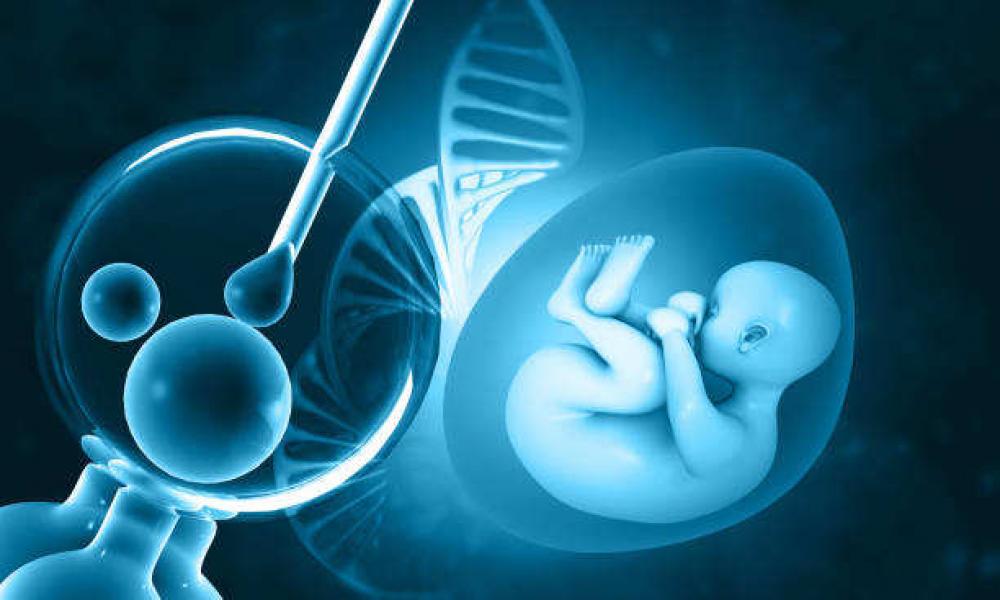In vitro fertilization (IVF) and infertility
Infertility is a condition when a couple can't get pregnant after a year or longer of trying to conceive. The Causes of infertility can include endometriosis, problem in fallopian tubes, low sperm count or low testosterone, uterine abnormalities, ovulation disorder and many more. Many treatment options are available for people with infertility, one of the most common and effective treatments is called In Vitro Fertilization (IVF).
In vitro fertilization (IVF)
In vitro fertilization (IVF) is a process of fertilization where an egg is combined with sperm outside of your body in vitro (in glass).IVF also known as Assisted Reproductive Technology (ART) or the Test-tube Baby Procedure, it is done to help couples who can't conceive naturally. Sometimes the cause of infertility is unknown and IVF can still be a helpful option.
Steps of the IVF Procedure
- Ovarian Stimulation: The woman takes medication to make her ovaries produce multiple eggs. Normally, a woman produces one egg per month. Fertility drugs tell the ovaries to produce several eggs.
- Egg Retrieval: Once the eggs are ready, a doctor collects them from the ovaries using a thin needle. It is a minor surgery, called follicular aspiration,
- Fertilization: The collected eggs are then placed with sperm in an environmentally controlled chamber to create embryos.
- Embryo Culture: When the fertilized egg divides, it becomes an embryo. The embryos grow in the lab within about 5 days.
- Embryo Transfer: A healthy embryo is placed into the woman's womb 3 to 5 days after egg retrieval and fertilization. In the hope that it will implant and grow into a baby.
Risks of IVF
IVF is generally safe, but like any medical procedure, it does come with some risks:
- Multiple Birth: More than one embryo might implant, leading to twins, triplets, or more.
- Ovarian Hyper stimulation Syndrome (OHSS): The ovaries can become swollen and painful.
- Ectopic pregnancy: The embryo implants outside the uterus, usually in a fallopian tube rather than in the womb.
What are the most common side effects of IVF?
Some people may experience side effects from the fertility medications used during the ovulation stimulation phase of IVF. These side effects can include:
- Nausea and vomiting.
- Headache
- Hot flashes
- Abdominal Pain
- Swollen ovaries
- Bruising from IVF injections
- Constipation and bloating
- Breast tenderness (from high estrogen)
What do you do to prepare for IVF treatment?
Preparing for IVF treatment involves several steps:
- Meet with healthcare providers to discuss the details of the IVF process and address any questions or concerns you may have.
- Both you and your partner will undergo thorough medical exams and fertility tests to assess reproductive health.
- Uterine and General Health Checks, including up-to-date Pap tests and mammograms if you're over 40.
- A semen analysis to assess sperm quality and quantity.
- Tests for sexually transmitted infections (STIs) and other infectious diseases will be conducted.
- Ovarian Reserve Testing, Blood and urine tests.
- Instructions on how to administer fertility medications.
- Genetic Screening to identify potential genetic disorders.
- Sign necessary consent forms.
- Uterine cavity evaluation using hysteroscopy or saline-infused sonography (SIS) to assess uterine health.
- Start supplementing with folic acid at least three months before embryo transfer to support prenatal health.
Success Rate of IVF
The success rate of IVF depends on various factors such as the woman's age, the cause of infertility and the clinic's experience. On average about 40% of women under 35 achieve pregnancy with IVF but the success rate decreases with age.
What is the duration of the complete IVF process from start to finish?
The IVF process from the start of ovarian stimulation to the pregnancy test typically ranges from 4 to 6 weeks. However, it's essential to note that success rates can vary and some individuals may require multiple cycles to achieve a successful pregnancy.
How long should one wait after the first failed IVF attempt before trying again?
After a negative test, you can expect to wait four to six weeks before starting another IVF cycle. Taking a short break between cycles is usually advised for health, financial and emotional reasons.
Are IVF and IUI the same?
IVF (In Vitro Fertilization) and IUI (Intrauterine Insemination) are not the same procedures and are used for different fertility issues. IVF involves fertilizing an egg with sperm outside the body, typically in a lab and then transferring the embryo into the womb. IUI on the other hand, involves placing sperm directly into the uterus around the time of ovulation to facilitate fertilization within the body. The choice between IVF and IUI depends on factors such as the cause of infertility, the health of the partners, and the recommendation of fertility specialists based on individual circumstances.
IUI is less expensive and less invasive than IVF. IUI has a lower success rate per cycle.
IVF is a powerful option for couples struggling with infertility. While it involves several steps and comes with some risks, it has helped many people achieve their dream of having a baby. Knowing what to expect and being prepared can make the journey smoother and increase your chances of success.

